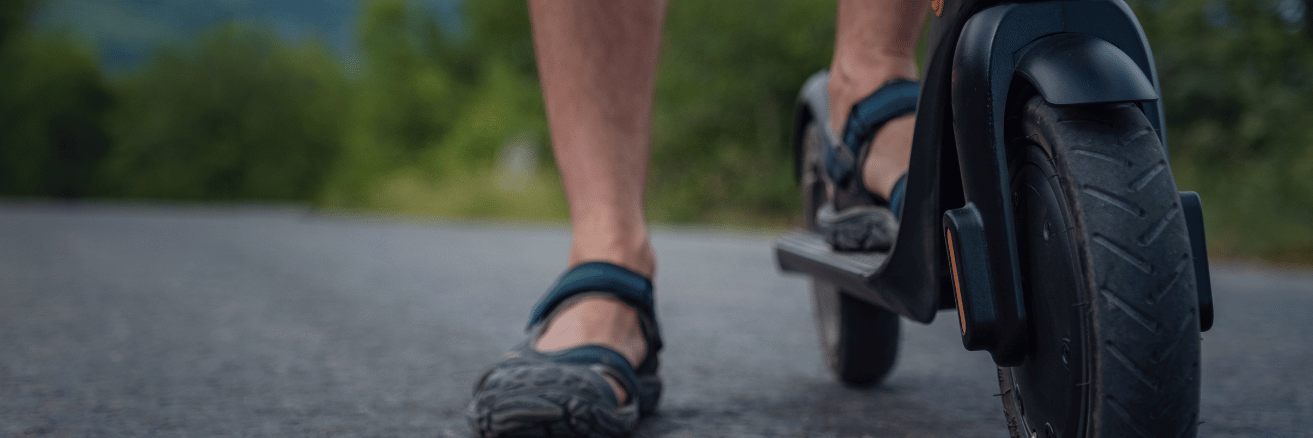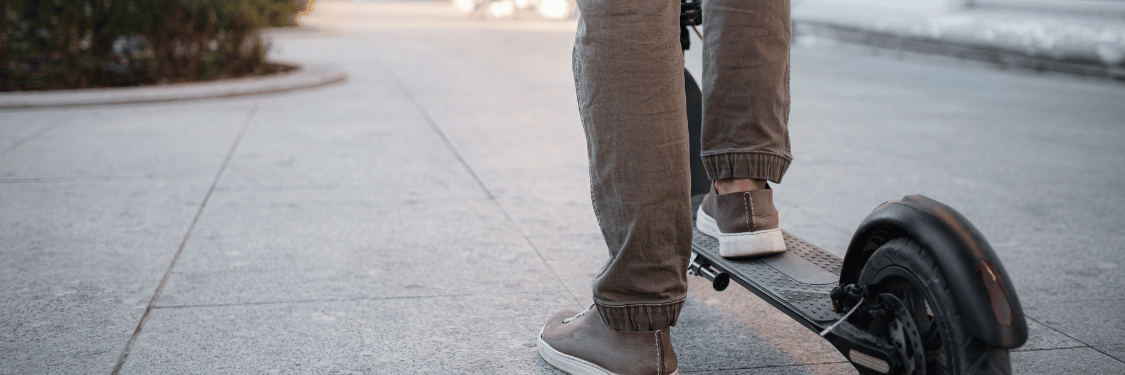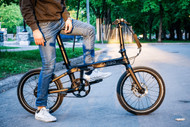Electric scooter and eBike laws Australia-wide
24th Apr 2024
In exploring the legal landscape of eBike laws in Australia, it's important to understand the eBike laws and regulations governing these electrified rides. Are eBikes legal in Australia? Are there different electric bicycle laws by state? The answer varies across states and territories, with each region having its own set of rules.
While riding e-scooters on private property is generally permitted across the country, venturing into public spaces requires a careful understanding of each state and territory's laws.
Let's delve into the specifics.

NSW eBike laws
In NSW, eBikes are classified as bicycles, subject to specific regulations. These include ensuring that the power of the motor decreases as speed increases, with a mandatory cutoff at 25 km/h or when pedalling stops. Additionally, riders must be at least 14 years old and wear helmets while riding.
NSW electric scooter laws
In NSW, it's illegal to ride private e-scooters on public roads, footpaths, and bike lanes. However, you can rent e-scooters from approved providers in specific trial locations.
To ride, you must be at least 16 years old and wear a helmet. After dark, use available lights and reflectors. Don't worry about vehicle standards as long as you're using a state-approved rental.
Speed limits are set at 20km/h on roads and 10km/h on shared paths, and you can't ride on roads with speed limits over 50 km/h. Using a mobile phone while riding is prohibited.
When it comes to alcohol and drugs, the same penalties as driving apply. This includes fines up to $5500, license disqualification, and possible prison time.
For more details, visit NSW Gov.

Electric bike laws Victoria
in Victoria, they take regulations seriously, especially for higher-powered eBike models. Depending on the specifications, riders may face additional requirements such as potential registration and the need for a motorcycle license.
However, Victoria boasts a welcoming environment for eBike enthusiasts, with a well-developed cycling infrastructure providing ample opportunities for exploration.
Electric scooter laws Victoria
In Victoria, e-scooter trials in public spaces have been extended. Similar road rules apply to bicycles. E-scooters must not exceed 25 km/h to be used publicly. One person per e-scooter is allowed, on shared paths or roads with speed limits below 60 km/h.
For more information, please go to VicRoads.

Electric bike laws QLD
In Queensland, eBikes are allowed on various paths, but compliance with power limitations is essential. Pedal-assist bikes are capped at 200 watts. E-Bikes must cut off at 25 km/h, and riders must adhere to bicycle road rules and general road rules.
Electric scooter laws QLD
In Queensland, e-scooters are considered personal mobility devices, allowing riders to use them on footpaths, shared paths, and certain roads. However, riders must adhere to both standard road regulations and specific e-scooter laws.
Age restrictions apply: Riders aged 12-15 must be supervised by an adult, while those 16 and older can ride independently. Safety measures mandate wearing a helmet that meets Australian safety standards, with exceptions for religious or medical reasons accompanied by appropriate certification.
E-scooters must meet defined vehicle standards, including size, weight, and design specifications, to qualify as personal mobility devices. Speed limits are set at 12km/h on footpaths and 25km/h on bike lanes and local roads unless otherwise indicated.
For more information, visit Queensland Transport.

Electric bike laws South Australia
In SA, there are distinctions between power-assisted pedal cycles and electrically power-assisted cycles, each with its own set of regulations. Both types of bikes must adhere to standard bicycle requirements, including wearing helmets and having effective brakes. However, bicycles with internal combustion engines are not permitted on SA roads or road-related areas.
Electric scooter laws South Australia
In South Australia, e-scooter trial programs have received positive community feedback since December 2023, but no recent updates have been provided as of February 2024. These trials are ongoing, allowing the use of e-scooters provided by authorised operators solely at designated trial locations.
Outside of these areas, e-scooter use is restricted to private property, prohibiting passenger carriage and limiting riding to designated footpaths or shared paths while excluding bike or bus lanes.
Regarding regulations, riders must be 18 years or older and wear an approved helmet when using e-scooters. Additionally, during nighttime or low visibility conditions, riders must equip their e-scooters with front-mounted white lights and rear red lights or reflectors.
Publicly hired e-scooters from state-approved providers are exempt from individual vehicle standards and modifications. Speed limits are capped at 15km/h, with riders required to maintain safe speeds considering surrounding conditions and pedestrians.
For more information visit My Licence.

Electric bike laws Western Australia
WA embraces eBikes as a preferred mode of transportation, with laws governing power output, engine selection, and riding areas. While both electric and petrol-powered eBikes are legal, compliance with power limitations is crucial. Additionally, regulations address pollution, noise, speed, and pedalling requirements to ensure safety and environmental responsibility.
Electric scooter laws Western Australia
In Western Australia, e-scooter riders are restricted to roads without dividing lines and with speed limits of 50 km/h or lower, as well as bike lanes on similarly regulated roads. Riding with a passenger is prohibited. For additional information, visit WA Gov's website.
Regarding regulations, riders must be at least 16 years old and wear an Australian standards-approved helmet. Speed limits are set at 10km/h on footpaths or pedestrian crossings and 25km/h on bike paths or lanes, local roads, and shared paths.

Electric bike laws Tasmania
E-bikes in Tasmania contribute to a sense of safety and adventure, with regulations focusing on power output and the rider's primary propulsion. Power-assisted pedal cycles must not exceed 200 watts of output, with the primary source of propulsion being through the rider's use of the pedals.
Electric scooter laws Tasmania
You can ride your e-scooter on footpaths, shared paths, bike paths, and certain local roads with speed limits of 50 km/h or less and no dividing lines or multiple lanes on one-way streets. However, carrying passengers or animals is not permitted. On shared paths and footpaths, you must maintain a safe distance from others, and keep left except when overtaking or impractical.
Riders must be 16 or older unless using a low-powered e-scooter under supervision. Safety equipment includes an approved helmet and lights for night riding. Speed limits are 15 km/h on footpaths and 25km/h on shared paths, bike paths, and roads. Using a mobile phone while riding and riding under the influence of alcohol or drugs is prohibited.
To learn more about e-scooter regulations, visit Transport Services.

Ride right and enjoy your eScooter and eBike adventures
Navigating the differing laws and regulations can be daunting, but it's essential to ensure safety and compliance. Remember, eScooters and eBikes aren't just toys, they're vehicles that come with responsibilities.
So, before embarking on your next adventure, familiarise yourself with local eBike rules and regulations, eBike helmet laws and eScooter laws to ensure a safe journey for all.

